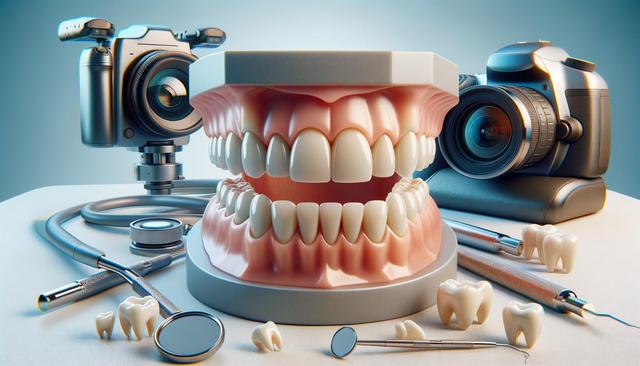Why Choose Dental Bridges
Dental bridges offer a practical and effective solution for individuals who have lost one or more teeth. By literally ‘bridging’ the gap left behind, these prosthetic devices restore both function and appearance. Missing teeth can affect everything from your bite to your self-esteem, and dental bridges are designed to address these issues. One of the primary reasons people opt for this treatment is the ability to regain normal oral function. Chewing, speaking, and even smiling can become more comfortable and natural with a dental bridge in place.
Another advantage of choosing dental bridges is their contribution to long-term oral health. Gaps in your smile can cause remaining teeth to shift out of place, potentially leading to bite problems or jaw pain. Dental bridges help maintain proper tooth alignment and prevent additional dental complications. Patients also appreciate that this option is relatively quick compared to other tooth-replacement methods, often requiring fewer dental visits for completion.
Individuals who opt for dental bridges typically report improvements in both their appearance and confidence. With natural-looking materials and a custom fit, these devices blend seamlessly with existing teeth, making them a well-regarded choice among patients and dental professionals alike.
Types of Dental Bridges
There are several types of dental bridges available, each tailored to specific dental needs and conditions. Understanding the different options can help you make an informed decision in consultation with your dental provider. The most commonly used types include:
- Traditional bridges: These involve creating crowns for the teeth on either side of the gap and placing a false tooth (or teeth) in between.
- Cantilever bridges: Used when there are adjacent teeth on only one side of the missing tooth or teeth.
- Maryland bonded bridges: These use a metal or porcelain framework bonded to the back of the adjacent teeth, often used for front teeth.
- Implant-supported bridges: Anchored by dental implants rather than crowns or frameworks, offering a more secure and lasting solution.
The right type of dental bridge depends on various factors, including the location of the missing teeth, the health of surrounding teeth, and your long-term goals. Discussing these aspects with your dentist can help ensure a suitable and personalized treatment plan.
Dental Bridge Cost
One of the most common questions patients have is about the cost of dental bridges. The overall price can vary significantly based on several factors, such as the type of bridge selected, the number of teeth being replaced, the materials used, and the complexity of the procedure. On average, a traditional dental bridge may range from a few hundred to a few thousand in total expense.
Here are some typical cost considerations:
- Materials: Porcelain fused to metal bridges tend to be less expensive than all-ceramic or zirconia options.
- Procedure complexity: More complex cases involving implants or multiple missing teeth may increase the total cost.
- Dental insurance: Many dental insurance plans cover a portion of the cost for bridges, depending on your coverage terms.
While upfront costs may seem significant, it’s important to weigh them against the long-term benefits, such as improved oral function, aesthetics, and reduced risk of further dental issues. Many dental offices also offer financing or payment plans to make this treatment more accessible.
Real Stories: Life Before & After a Dental Bridge
For many individuals, the difference that a dental bridge makes in their daily lives is substantial. Before receiving a bridge, patients often report feeling self-conscious about their smiles, avoiding certain foods, or even altering their speech to compensate for missing teeth. These challenges can impact not only oral health but also social and professional interactions.
After the procedure, patients frequently describe a renewed sense of confidence and comfort. They are able to eat more freely, articulate words clearly, and smile without hesitation. For example, one patient shared how they avoided smiling in photos for years due to a missing front tooth. Following the placement of a dental bridge, they felt more at ease and even started participating in social events they’d previously skipped.
These real-life transformations highlight the emotional and functional benefits of choosing a dental bridge. While the process may involve some adjustment, most patients find that the positive impact on their quality of life far outweighs any temporary discomfort during treatment.
Maintaining Your Dental Bridge
Once you’ve invested in a dental bridge, proper care is essential for ensuring its longevity and effectiveness. A well-maintained bridge can last many years, making daily oral hygiene and regular dental visits especially important. Just like natural teeth, your bridge should be cleaned thoroughly to prevent gum disease and decay in the supporting teeth.
Here are some tips for taking care of your dental bridge:
- Brush twice a day with a soft-bristled toothbrush and fluoride toothpaste.
- Floss daily, using special floss threaders or interdental brushes to clean around the bridge.
- Use an antibacterial mouthwash to reduce plaque and bacteria.
- Visit your dentist regularly for checkups and professional cleanings.
Adopting these practices not only helps maintain your dental bridge but also contributes to overall oral health. Your dentist may also recommend specific products or tools designed to make bridge care easier and more effective. With consistent attention, your dental bridge can continue to provide function and confidence for many years to come.
Conclusion: A Step Toward a More Confident You
Choosing a dental bridge is more than just a cosmetic decision—it’s an investment in your oral health and overall well-being. Whether you’re exploring options for the first time or looking to replace an older solution, understanding the types of dental bridges, the dental bridge cost, and how they can transform lives provides a solid foundation for making the right decision. Real patient experiences offer insight into how life-changing this treatment can be, while daily maintenance ensures the benefits last for years. If you’re ready to regain control of your smile and improve your quality of life, discussing this option with a dental professional is a great place to start. It’s time to take that step and rediscover the joy of smiling confidently.









